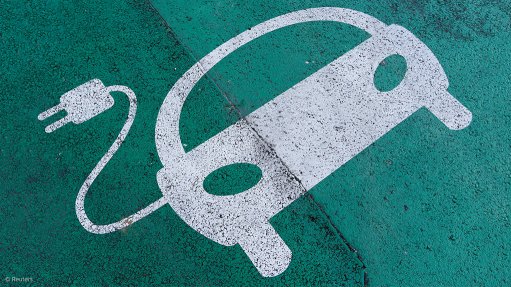
VANCOUVER (miningweekly.com) – The wave of change that the electrification of automobiles brings is moving beyond electric vehicles (EV) to the micro, artificial intelligence and autonomous mobility options, which should increasingly be brought into the outlook for the burgeoning market.
“Big gambles and bold leadership does not always guarantee results,” founder of The Daily Kanban and Bloomberg analyst Edward Niedermeyer cautioned an audience attending the recent Vancouver leg of London-based Benchmark Mineral Intelligence.
From his qualitative analysis, it is evident that cars are a very emotional and even irrational topic, with sales of EVs, sports utility vehicles (SUVs) and sports cars driven by desire, rather than need, from a consumer perspective.
But the auto industry is extremely complex and challenging, making it difficult to present or formulate a big picture, he surmises.
“Everyone presents parabolic graphs of the uptake of EVs, but is it true? The fact remains that the structure of the auto industry remains that it is inherently a capital intensive, low-margin industry, that is extremely averse and resistive to change across the board,” he notes.
For him, Tesla encapsulates that idealism that appeals to consumers, which contrasts with the brutally tough business reality of mass producing cars.
Design, engineering and prototyping is something that Tesla has done well, and it has succeeded in generating a lot of excitement, which was long absent from the market. But then it leads to the production phase, which is where the industry is often made and broken, he said.
If a producer cannot guarantee a high quality of production, the inevitable outcome is bankruptcy, the critic says. Apart from the 2008 downturn, there have been few bankruptcies in the auto sector, which belies the consolidated nature of the business.
He points out that Tesla’s forecast is bullish, but notes that the North American EV producer becomes vague going forward over time. He argues that the optics seek to guide that the production time frame is speeding up, when in reality it is not.
“How Tesla fares through the next year or so will set the pace for the market. Car companies are really not scared that Tesla will steal sales, but they are losing sleep over Tesla being able to steal all the attention,” he notes, and Tesla founder Elon Musk’s publicity stunt of launching a Tesla roadster into space on the world’s largest rocket goes to show what he is capable of.
Niedermeyer pointed to the fact that Nissan took a $5-billion bet on the first Leaf production model in 2011, which was a huge gamble long before Tesla even came on the market. Nissan recently announced they have now sold 300 000 units.
In contrast, within a week of unveiling the Model 3 in 2016, Tesla revealed they had taken 325 000 reservations for the car, more than triple the number of Model S sedans sold by the end of 2015.
But Nissan came through in the end, with caveats. “This is the kind of decision that can break a company. It is a pivotal moment for Tesla,” he says.
He notes that consumer acceptance has not kept up with legislative leadership and only the luxury EV market seems well established. But it is changing, he says, an EV SUV boom is now forthcoming in the US, and more choice is coming to the average buyer, at increasingly comparable prices to that of internal combustion engines.
Looking at the market’s trajectory, China is expected to be the baseline for the market, but cities will take centre stage in market development, where pollution and congestion rules will incentivise consumers to switch to EVs. “It might even play a more important role than what international treaties will.”
“There is no knowing where the change will end – the demand for energy metals is moving to the micro, artificial intelligence and autonomous mobility options that need to be brought into the fold of forecasting,” Niedermeyer said.